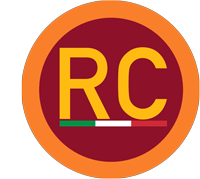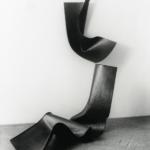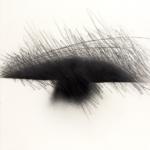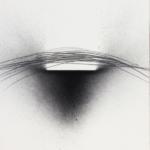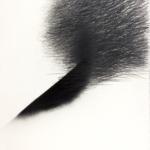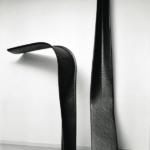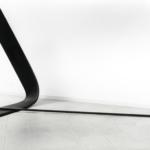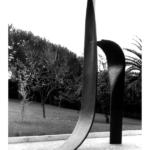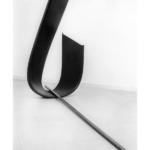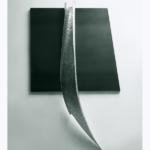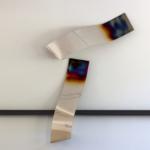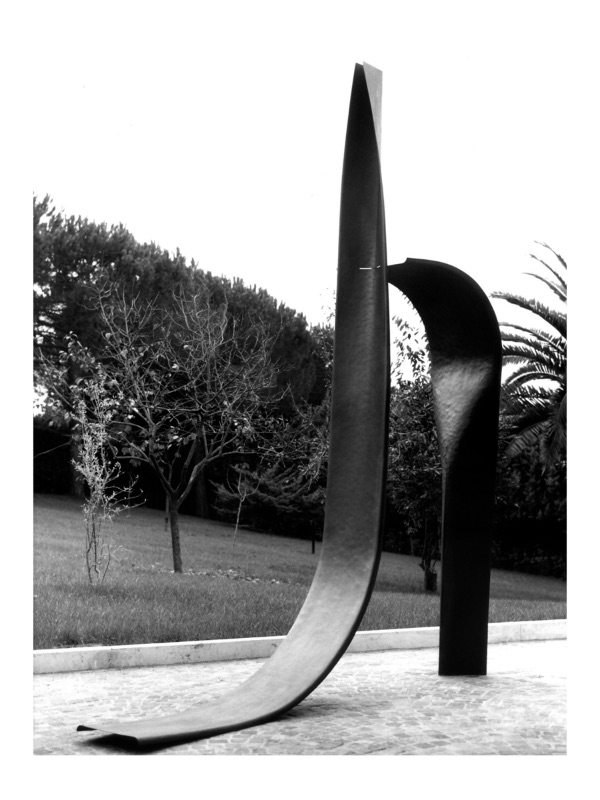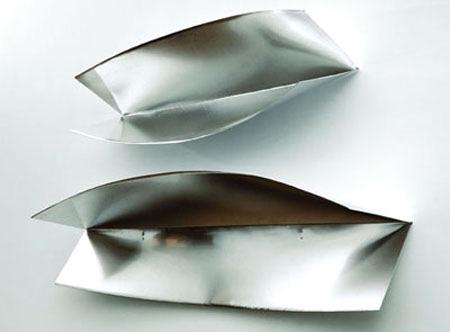 The noble floor of Palazzo Caetani Lovatelli, the Roman headquarters of Bertolami Fine Arts, will host until March 10 of 2018 a selection of the most significant works made between 1985 and 2013 by the maestro Carlo Lorenzetti, one of the most sensitive protagonists of contemporary Italian sculpture.
The noble floor of Palazzo Caetani Lovatelli, the Roman headquarters of Bertolami Fine Arts, will host until March 10 of 2018 a selection of the most significant works made between 1985 and 2013 by the maestro Carlo Lorenzetti, one of the most sensitive protagonists of contemporary Italian sculpture.
The works on display – thirteen sculptures and fourteen drawings – confirm the authenticity of an artist who is never taken for granted and able to reach our soul through a research aimed at animating the inertia of matter.
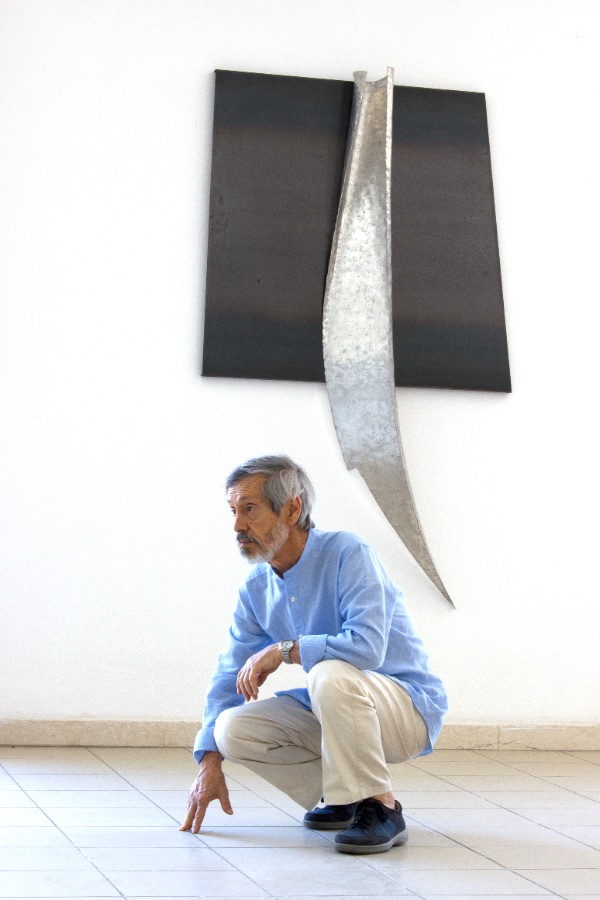 From the masterpieces of the 80s – Aggrotto (1985) and Sidereoerrante (1989), blackened by a layer of graphite spread on the metal surface – to the most recent works characterized by the contrast between bright aluminum shapes and black iron sheets, Carlo Lorenzetti turns clearly looking for an essential geometry, very distant, however, from the cold static nature of Euclidean geometry. In the catalog the critical Silvia Pegoraro speaks of restless geometry and, in fact, are those of the Roman sculptor, forms crossed by a subtle energetic breath that makes them lyrically vibrant. Its sheets of iron, brass, steel and copper are able to overcome the constraint of weight and volume in a poetics of lightness that is the peculiar trait of his art.
From the masterpieces of the 80s – Aggrotto (1985) and Sidereoerrante (1989), blackened by a layer of graphite spread on the metal surface – to the most recent works characterized by the contrast between bright aluminum shapes and black iron sheets, Carlo Lorenzetti turns clearly looking for an essential geometry, very distant, however, from the cold static nature of Euclidean geometry. In the catalog the critical Silvia Pegoraro speaks of restless geometry and, in fact, are those of the Roman sculptor, forms crossed by a subtle energetic breath that makes them lyrically vibrant. Its sheets of iron, brass, steel and copper are able to overcome the constraint of weight and volume in a poetics of lightness that is the peculiar trait of his art.
The world needs depth, culture, and examples like that of Maestro Lorenzetti. Dedication, curiosity, sense of daily life and of time, that unusual dialogue between the power of imagination and the rigor of the composition. We need teachers like Carlo Lorenzetti, so we met him for you. Do not miss his touching interview and do not miss his special show !!
1. Tell us about the beginning of your artistic journey.
As a child I was enchanted to observe the process of construction of objects, I speak of the most varied objects. I had an innate inclination to invent toys with fragments of materials found, to create poor and colorful scenarios and theaters and I liked to draw what I imagined or aspects of nature as the mutations of the sky. Over time, the technical knowledge and the visual horizons have expanded, nourished also and above all by a profitable didactic experience. Of that experience I want to remember the period of formation at the Acadèmie de France in Rome, which has favored the in-depth study of the history of art but also the awareness of contemporaneity and an exercise in doing from which my curiosity has been nourished, the tendency, in me very strong, to dialogue with the material to change its characteristics and the need to conceive a personal expressive language.
2. Is there a place that played a decisive role in his artistic research?
Rome has made an important contribution to my training. I have always loved to draw the historical-architectural stratification, focusing, especially, on some structural details and on the chiaroscuro contrasts. Those drawings were the starting point for a reflection on the relationship between light and shadow, between black and white in their fascinating nuances.
3. An intense experience of study and Rome in the background: an interesting intertwining that already in the Fifties produced remarkable results.
It is the epoch of my twenties, the era in which my artistic research began to manifest itself with its original physiognomy, all focused on design and on a concept of sculpture aimed at denying any consistency of mass and weight. I immediately chose the metal sheet as my preferred material: a two-dimensional reality with which to build an unusual three-dimensionality through the overhang that modulates the plane.
4. The overhang is a technique used more than anything else by goldsmiths, his choice to apply it in sculpture to large metal surfaces is definitely located outside the conventions.
The embossing, an ancient technique, is for me certainly not a “showy virtue”, but the most modern means, direct and engaging to interact with the material and turn its flat physicality into a structured plastic-spatial idea. The sculpture creates a self-qualifying space in an open and airy dimension. When the work is then destined to a pre-established place, a dialogue can be activated that can modify the existing with unexpected tensions and energies.
5. What difficulties did you encounter at the beginning of your career?
My reserved and autonomous nature has neither favored self-promotion nor insertion into groups and movements, let’s say that my character has not fully allowed me to benefit, for the purposes of the great popular success, of the lively and intense climate of Rome of the fifties and sixties.
6. Yes, I understand. The name of Carlo Lorenzetti is in fact less known to the general public than that of other artists his peers. The consent of the critics, however, arrived immediately and was unanimous. And we are talking about the most qualified Italian critic of the second half of the 20th century.
Yes, from the point of view of critical recognition I have been, in a way, lucky. In 1959 I received the award for the young sculpture from the National Gallery of Modern Art and, in 1962, presented by Ettore Colla, I presented my first solo exhibition at the Trastevere Gallery of Topazia Alliata
7. A very important gallery is that of Topazia Alliata.
The exhibition was also visited by Giovanni Carandente who, enthusiastic about my research, invited me to participate in the memorable and historical exhibition “Sculptures in the city”, organized as part of the Due Mondi festival in Spoleto.
8. A young and semi-unknown Roman artist called to exhibit alongside colleagues such as H. Arp, A. Calder, L. Chadwick, H. Moore, D. Smith and many other ninety pieces, in short, those who era were the best sculptors in the world.
I told you, I was lucky.
9. Represent yourself through three adjectives.
Authentic, free, reserved.
10. Tell us how a work is born.
My work in the realization of a work does not provide a precise graphic project, but develops from a fantastic idea that takes consistency in the different ways and times of doing. The stratification of doing and imagining stops when the work is made complete.
11. Characterized by that sense of lightness that is its trademark.
I ask one of my works to animate the inertia of the material and the ability to visualize, in the difficulty of doing, ever more dilated spaces. It must know how to expand the faculty of perception and, in the fusion of reason and sentiment, to propose itself in the essence of lightness, as an unlimited extension aimed at opposing the unjust heaviness of the world in the commitment and tension of research. All my work is this: a laboratory of knowledge, thoughts, emotions that aspire to a civil and high qualification of human life.
12. He told us that he immediately chose the metal foil as his preferred material, is there also a metal of choice?
The metal I favor is iron, a serious, difficult matter that requires a particular commitment and which produces, with its opposition, a sort of continuous challenge.
13. Her shy nature has not prevented her from accepting another challenge, that of teaching: Carlo Lorenzetti is not only a great artist, but also the master of highly successful artists, Nunzio, just to make an example. How did you deal with the teaching experience and what advice would you give to a young teacher?
It makes me happy to know that my long teaching and plastic research activity has been important and profitable for at least some of my students. I would suggest to a young teacher not to impose rules or languages, but to work to develop in students a critical and autonomous spirit, aware of past and recent history, independent of ephemeral fashions and free in the rigor and quality of research. Even today, my relationship with young people is aimed at developing a constructive dialogue and bringing out, in questioning, the truth of his artistic vision, dictated by a passion that is sincerely oriented to reconfirm the right consideration of the role that art must to play in society.
14. It seems that art is experiencing great changes, what do you think?
Art and art criticism have been undergoing major changes for over a century. Some are very positive and shareable, others risky deceptive, often proposed and supported by a senseless market system, all aimed at putting themselves on the fashions of the moment, a system that spreads an insidious relativism and imposes something that nothing shares with the reasons of form, of artistic language, of poetic expressiveness, of culture in general, in the high and responsible sphere of historical knowledge and of current events. In the deafening and conditioning noise of an unbridled acceleration of ephemeral and banal finds, the ability to distinguish and reflect on the quality and the sense of the work is often lost, whose becoming should correspond to an ethical and aesthetic dimension of the thought recognized by a appropriate specificity of skills and adequate critical judgment.
15. To finish, a dream that you would like to achieve?
That of a just and pacified society where culture and art can live, where the dream can be reborn and wonderful rainbows can appear, a new man’s generous flights to sidereal spaces.
The long and successful career of Carlo Lorenzetti, was born in Rome in 1934, is the demonstration that the consent of the critics is conquered even without giving in to the flattery of transitory fashions. The artist, who has never felt the need to proceed in formation within groups or movements, has traveled in complete autonomy an original path within the line of research interested in renewing the sculpture in the sign of a liberation from constraint of the law of gravity, creating forms capable of conquering the third dimension not as static masses that firmly occupy the space, but as mobile interweaving of lines in dialogue with the air. Sculpting inserting in the composition unfathomable elements such as emptiness and energy: a fantastic idea, perfectly in line with the climate of the time when his work begins, the second half of the 20th century, the epic years of the conquest of space and revolutionary applications to human life of discoveries on the composition of matter. This is why each of its rare, accurate exhibitions is an important occasion for fans of contemporary art. The effect of the perceived movement is created by the calibrated visual games, a constant alternation of flashes of light and gurgling of shadow, impressed on sheets of copper, iron, brass and aluminum by cantilevering, a technique, in truth, usually used in jewelry, but that, applied in a totally unconventional way to the large dimension, allows the metal matter to come to life.
The celebrated poetic character of Lorenzetti’s work is born from the demiurgic capacity to breathe breath into matter, a hymn to the perfect precariousness of life. Light and shadow, rationality and lyricism, formal control and torrential fantasy, the heaviness of the matter canceled in the lightness of aerial forms: the dialectic of contrasts is at the center of the reflection of an artist among the most fascinating Italian contemporary art, not only for the contribution given to sculptural language, but also for the exceptional talent of designer. The extraordinary quality of the drawings – of a non-design nature and totally independent of the sculptures – exhibited by Bertolami Fine Arts will be for many a happy discovery.
L’artista :
Carlo Lorenzetti was born in 1934 in Rome, where he lives and works. Begins to exhibit in the second half of the fifties by imposing a substantial change in the ways of understanding the work on three-dimensionality and space. He chooses as a means of his research plastic the metal plate that, directly embossed, lives the third dimension, counteracting any weight in the inventions of wall and ground forms. In 1962 he was invited to the Spoleto exhibition “Sculpture in the city”, as a younger sculptor next to Arp, Calder, Moore, Smith and others. Participates in the Venice Biennials (1970, 1972 with personal room, 1976, 1986), at the Quadriennali in Rome (1965, 1973 with personal room, 1986, 1999), at “Ferruzzi for art”, a project of AAM Architettura Arte Modern with “Elements of condensation of light” for the vault of the Palazzo delle Arti in Ravenna (1991), in exhibitions in national and international museums (Montreal, New York, Milan, Sao Paulo, Madrid, Cologne, Vienna, Krakow, Ljubljana, Budapest, Basel, New Delhi, Tokyo, Bilbao, Buenos Aires, Moscow, Leningrad, Frankfurt am Main, Osaka, Brussels etc.). He holds personal and anthological exhibitions in the city of Anghiari (1972), in the Palazzo Comunale di Salò (1986), in the Palazzo dei Consoli in Gubbio (1986), in the Galleria Niccoli di Parma (1989), in the Galleria Civica di Modena (1992 ), in the Pavilion of Contemporary Art in Ferrara (1996), in the Castello di Pergine Valsugana (1998), in the Galleria Fumagalli in Bergamo (2001), etc. His works are exhibited in museums and public collections both in Italy and abroad. Realize, on commission, large sculptures in public spaces.
Awards: Receives, as confirmation of criticism for his artistic career, official awards such as the National Award for Young Sculpture (1959) awarded by the GNAM (National Gallery of Modern Art) in Rome, the Antonio Feltrinelli Award for Sculpture (1988) awarded by the Accademia Nazionale dei Lincei, the Prize President of the Italian Republic for Sculpture (2004) on designation of the National Academy of San Luca, of which he has been a member since 1999 and President in the two year period 2015-2016.
 CARLO LORENZETTI Sidereal spaces exhibition in Rome 1 February – 10 March 2018
CARLO LORENZETTI Sidereal spaces exhibition in Rome 1 February – 10 March 2018
edited by Francesco Bonanno
Bertolami Fine Arts
Palazzo Caetani Lovatelli –piazza Lovatelli , 1-Rome
Info: +39 06 3218464 – + 39 06 32609795 – + 39 345 0825223 – www.bertolamifinearts.com
Hours: Monday to Saturday 10.00 am – 7.00 pm – Closed Sunday
Free admission
Bertolami Fine Arts Books Catalog with critical text by Silvia Pegoraro
She is an independent curator, art advisor and international marketing management consultant. For more than 20 years, he has been a cultural designer of events related to contemporary art with particular attention to unusual spaces and interactions with other arts.
